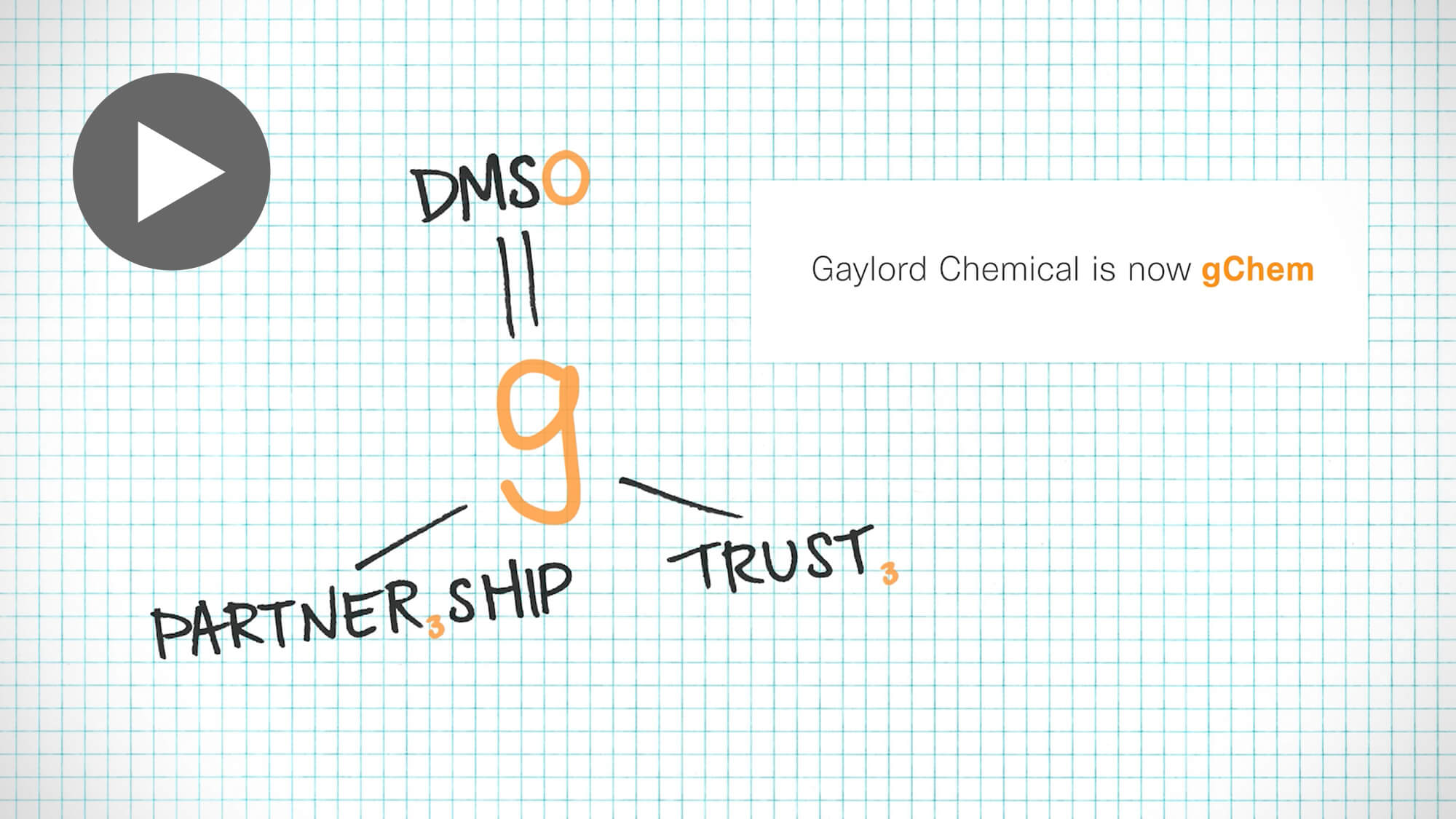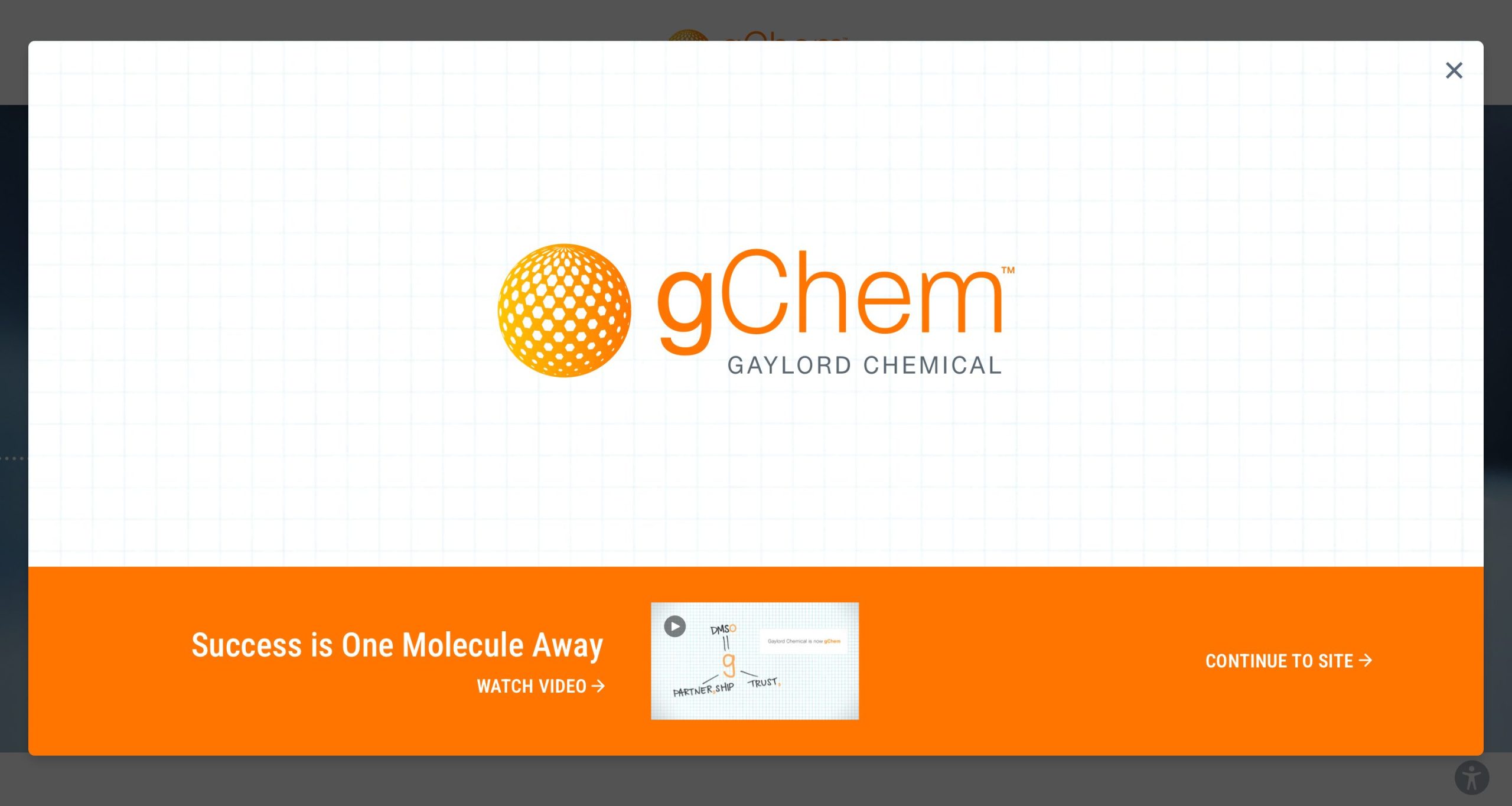Dimethyl Sulfoxide (DMSO) is a highly polar and water miscible organic liquid. It is essentially odorless and has a low level of toxicity. As do all dipolar aprotic solvents, DMSO has a relatively high boiling point.
Learn more about DMSO handling in cooler climates here.
DMSO ACS Reagent Grade
DMSO ACS Reagent Grade is Dimethyl Sulfoxide that conforms to the American Chemical Society’s (ACS) 9th Edition Specifications for Reagent Chemicals. It meets requirements for general solvent use and is adequate for many basic applications.
Key Applications
DMSO ACS Reagent Grade may be used as a solvent for non-spectrophotometric methods of analysis. DMSO is miscible with water in all proportions, and is a useful solvent for gas chromatography. Ideally, analytical applications wherein UV absorption is not critical.
DMSO ACS Spectrophotometric Grade
DMSO ACS Spectrophotometric Grade is Dimethyl Sulfoxide that conforms to the American Chemical Society’s (ACS) 9th Edition Specifications for Reagent Chemicals.
In addition to the normal parameters related to purity, this monograph specifies maximum UV absorbance levels at five wavelengths. This grade is the preferred solvent for any form of UV spectrophotometric analysis, due to its guaranteed analytical clarity.
Key Applications
HPLC Mobile Phase Component. The low UV limits of DMSO ACS Spectrophotometric Grade result in minimal interference when using UV detectors in HPLC. The polarity of DMSO can be used to modify the solvent strength of HPLC eluent in reverse phase mode.
General Purpose Analysis Solvent. The nearly universal solvent properties of DMSO allow it to effectively dissolve difficult materials, including many polymers and inorganic materials. DMSO ACS Spectrophotometric Grade is suitable for general UV and visible spectrophotometry, IR spectroscopy, and all methods that demand solvent purity and low levels of UV absorbance.
Solvent for High Throughput Screening of Investigational Compounds. The analytical clarity of this product, along with the ability to readily dissolve a wide range of compounds, make this grade ideal for HTS applications.
DMSO Anhydrous Grade
DMSO Anhydrous Grade has an extremely low moisture content produced under exacting manufacturing conditions to ensure dryness.
In certain analytical methods, water offers unwanted interference and can provide spurious information. This is especially true in IR Spectroscopy, wherein a small amount of water can obscure a large portion of the spectrum. In synthesis, DMSO Anhydrous Grade contains less than 50 ppm water, and minimizes losses to side reactions.
Key Applications
Compound Library Management. DMSO Anhydrous Grade may be used to store materials for later testing. The low water levels minimize degradation that may occur through association with water and hydrolysis. Compounds also stay in solution better in dry DMSO.
Water-Sensitive Compound Synthesis. Water present in DMSO can react with strong bases such as sodium hydride, butyllithium, and alkoxides. This can result in lower yields, and byproduct formation.
Water-Sensitive Analytical Applications. The potent solvent strength of DMSO makes it a valuable medium for the analysis and characterization of difficult-to-dissolve compounds and polymers.
DMSO EL-10 Grade
DMSO EL-10 Grade has extremely low metals content and is an essential component in photoresist stripping products during the manufacture of semiconductor devices and TFT-LCD displays.
Key Applications
Thin Film Transistor – Liquid Crystal Display (TFT – LCD) production: as a photoresist stripping reagent during the photolithographic process.
Manufacture of Semiconductors: as a photoresist stripper, and post-etch rinsing solvent.
As a safer alternative to the use of NMP in electronics applications.
DMSO Industrial Grade
DMSO Industrial Grade is a technical grade of Dimethyl Sulfoxide that is suitable for use in common industrial formulations.
Key Applications
Cleaning Solutions
DMSO is an effective solvent for removing organic materials from equipment lines and manufacturing equipment.
Paint Stripping
An important example is the use of DMSO as a non-toxic alternative to more hazardous solvents in paint stripping formulations.
Polymer Processing
DMSO is used as a reaction solvent in manufacturing a variety of polymers.
Procipient® (Dimethyl Sulfoxide USP, Ph.Eur.) Grade
Procipient®(Dimethyl Sulfoxide USP, Ph. Eur.) is the only grade of DMSO suitable for Healthcare and Drug Delivery applications. Gaylord Chemical’s USP grade is the only DMSO that is manufactured under cGMP conditions, in compliance with API guidelines (ICH Q7). Procipient is supported by a Type II Drug Master File (DMF) on file with the FDA, and DMF at Health Canada, and a CEP granted by EDQM. The product is multi-compendial and conforms to both the USP and Ph. Eur. Monographs.
Procipient is the grade of DMSO required in finished pharmaceutical dosage forms. The FDA CDER Inactive Ingredient Database lists applications for this grade. When the highest purity is required, Gaylord is your best resource.
Pharmaceutical Technology publishes a detailed review of FDA regulated applications which incorporate Dimethyl Sulfoxide USP. This paper provides a precedence of use overview for DMSO excipient and active ingredient applications.
Key Applications
Excipient in Drug Delivery Applications to enhance the efficacy of therapeutic agents through controlled release.
Non-toxic solvent of polymers in Medical Devices.
Cryopreservation of biological cells in cell culture and drug delivery as well as storage of human umbilical cord blood, hematopoietic stem cells, and biological tissue.
DMSO Synthesis Grade
DMSO Synthesis Grade is produced to an exacting quality standard specifically for the synthesis of Active Pharmaceutical Ingredients (API). DMSO Synthesis Grade simplifies the manufacturing process by contributing minimal process impurities while providing a predictably low moisture level.
It is the appropriate choice in any chemical synthesis where the final purity of the finished compound is critical.
Key Applications
Preferred solvent and/or reagent choice in many mild and selective oxidations such as the Swern and Kornblum reactions.
Active pharmaceutical ingredient manufacturing where highly pure reaction solvents are required.







